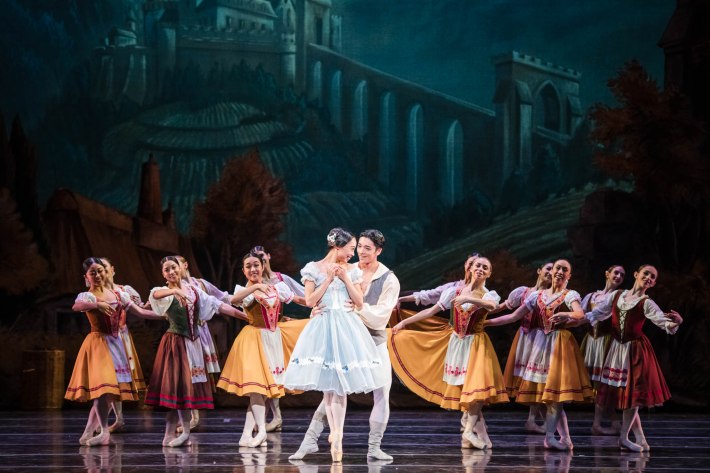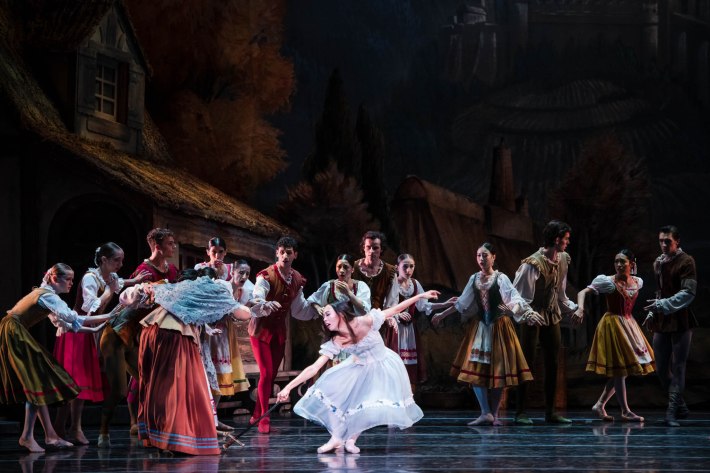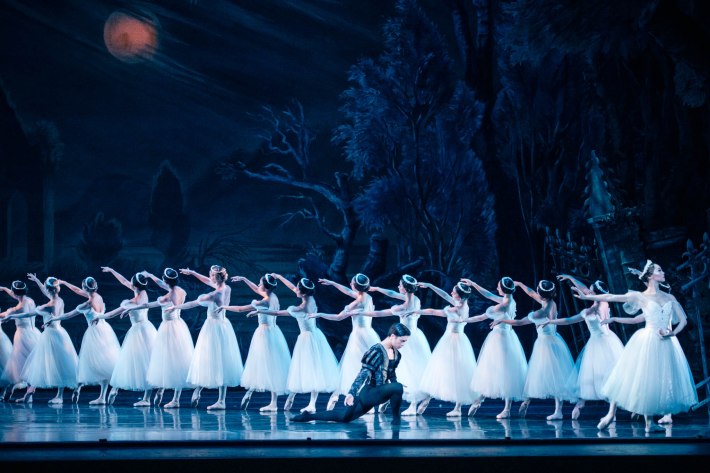Tulsa Ballet: Giselle
Tulsa Performing Arts Center
November 2, 2025
You know those songs or movies that hook you as a kid, that speak to some weird deep part of you that you don’t understand? The ballet Giselle is like that for me. I’ve seen it live and written about it from here to New York, watched a dozen versions from VHS to YouTube, and even put on the villager costume and ghost wings myself as an understudy with Tulsa Ballet back in the day. I’ve been obsessed with it almost as long as I’ve been alive.
With a lifetime of Giselle under my belt, you’d think I’d have seen all there was to see in it, but that’s the thing about these classics: there’s always more in them to see. On Halloween weekend, Tulsa Ballet brought Giselle back to Tulsa in a performance so clear, honest, and detailed that all its hidden corners got flooded in light.

Giselle premiered in Paris in 1841, as the ongoing influence of the French Revolution was tipping cultural preferences away from Enlightenment rationality and Olympian gods and toward stories about real people, real life, real history, and really haunted Gothic stuff. Giselle has it all: class tension, rustic cheer, men being danced to death by ghost women. It even has a mad scene, in which the titular main character—a fragile, dance-loving young woman who’s fallen in (mutual?) love with an aristocrat posing as a fellow peasant who then turns out to be already engaged to a fancy dame—nearly stabs herself in the heart with the cad’s own sword. The ballet is a prime instance of Romantic art—and that means drama, which Tulsa Ballet fully delivered without hamming it up or playing it down.
Seeing a peasant girl with a heart condition lose her mind onstage after betrayal by the 1% must have been a wild moment for audiences in the 1840s. It worked just as well in 2025, especially since Nao Ota’s Giselle was pure innocence and childlike joy before Albrecht (the cad) entered the scene with a billowing cape that announced his outsized power. Some of this can be attributed to the exceptional acting—like the long, long moment Ota spent turned away from the audience, turning on life’s hinge as her heart was breaking, or the body language of Jun Masuda as an elegant, smooth-operating Albrecht, more coolly intimidating when aggrieved than a man twice his size could have been.

But so much of Giselle’s emotional impact comes through the choreography itself. Little floating skips from Giselle’s first appearance turn up later, shredded and blurred, in her mad scene. A split-second head/arm whip that’s part of a villagers’ dance recurs in Act Two, when predecessors of those villagers—women who’ve died from broken hearts and turned into vengeful ghosts—do a version of the same movement as part of a famous mass stage-crossing sequence. The queen of those ghosts, Myrtha, does a penchée arabesque that echoes the one in Giselle's big Act One solo. In other words, the movement crosses over onto the other side just like the women do. These aren’t just any ghosts: they’re ghosts who know the dances of this particular village, who’ll now use them forever to dance cheating lovers to death in the forest outside of town.
Details like these skips and head-whips only come through with such emotional force when a performance values them as rigorously as Tulsa Ballet’s did. In contrast to newer works that tend to flood the stage with frenetic energy, a ballet like this lets the viewer sink into a story, just as it lets the dancers sink into hard-won classical technique and dramatic expression. There’s a big world down there beneath the fast and furious surface.

In the end, Giselle and Albrecht dance in the forest until the sun comes up, which saves him from death at the hands of the vengeful ghosts and (in some interpretations, anyway) saves her from fully becoming one of them. She gets to rest in peace; he gets to grieve like a human, and maybe change how he’s living. But it’s a close thing: after a duet that built and built in harrowing tension, Masuda did one final, feral leap, and it looked—as Ota had looked in her mad scene—like he was coming undone. Dancing, like love, can kill you; it can also save your life. With full-bodied music from Tulsa Symphony Orchestra, as full of haunting motifs as the choreography, this Giselle did something few ballets do for me these days: it made me cry.
From principal dancers to the corps de ballet, the company tackled this giant in the ballet canon with patience and depth, delivering an experience that felt spacious, lucid, and surprisingly fresh given how old this piece of art is. Giselle is a test of any company’s fundamental soundness; there’s nowhere to hide flubs in this choreography, no abstraction in which one can be emotionally vague. This company more than passed that test.






